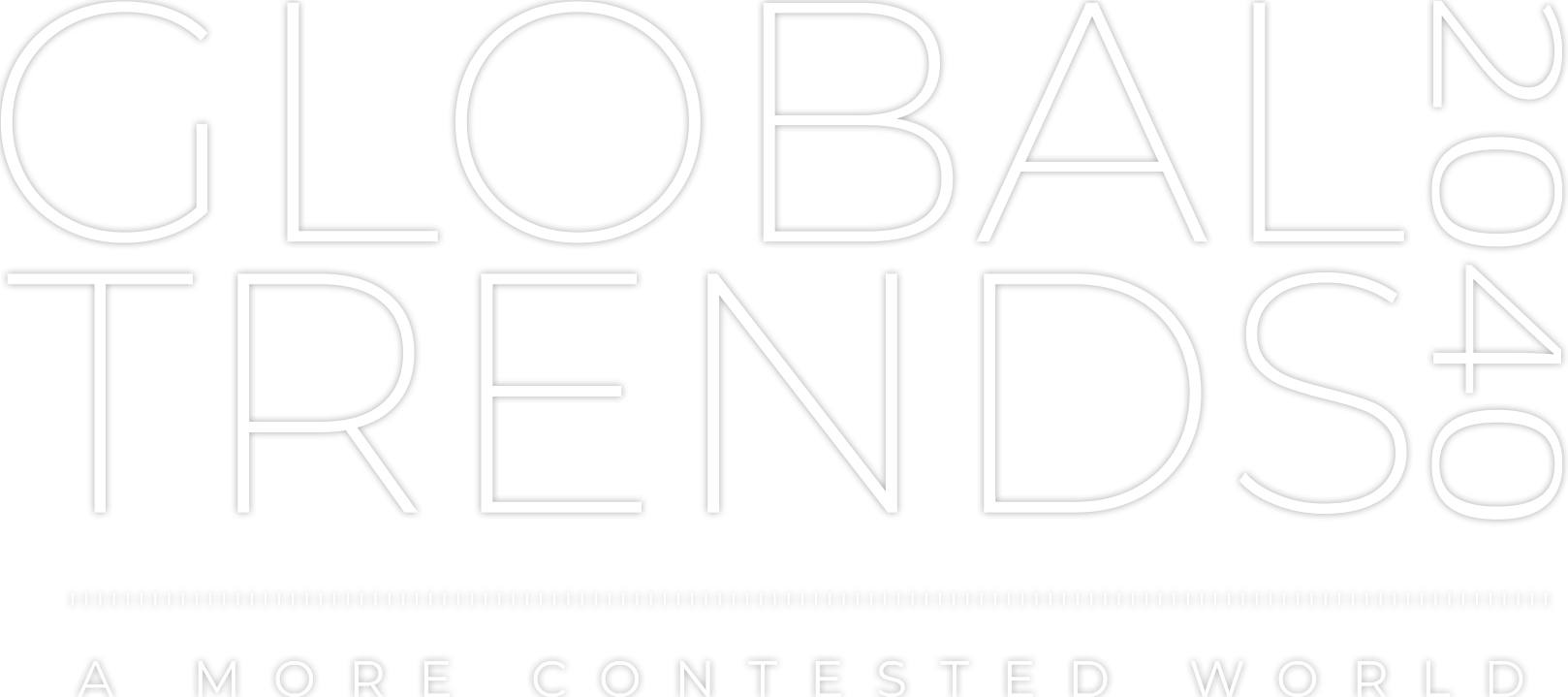SCENARIOS FOR 2040
SCENARIO 1: RENAISSANCE OF DEMOCRACIES 
In 2040, the world is in the midst of a resurgence of open democracies led by the United States and its allies. Rapid technological advancements fostered by public-private partnerships in the United States and other democratic societies are transforming the global economy, raising incomes, and improving the quality of life for millions around the globe. The rising tide of economic growth and technological achievement enables responses to global challenges, eases societal divisions, and renews public trust in democratic institutions. In contrast, years of increasing societal controls and monitoring in China and Russia have stifled innovation as leading scientists and entrepreneurs have sought asylum in the United States and Europe.
HOW WE GOT THERE
The successful development and worldwide distribution of the COVID-19 vaccine in 2020-21 focused global attention on the importance of scientific research, innovation, and technological development to address emerging global challenges. Networks of research institutes, governmental agencies, nongovernmental organizations, and private corporations operating in Organization for Economic Cooperation and Development countries ramped up information-sharing and developed coordinated approaches for research and development focused on artificial intelligence, biotech, and other technologies critical to revitalizing economies and addressing societal needs. During the succeeding 10 years, these efforts produced a series of groundbreaking advances, enhancing productivity and leading to an economic boom. Technological advances and economic growth combined to improve government capacity, enabling democratic governments to deliver services and provide security more effectively.
With greater resources and improving services, these democracies launched initiatives to crack down on corruption, increase transparency, and improve accountability worldwide, boosting public trust. These efforts helped to reverse years of social fragmentation and to restore a sense of civic nationalism. The combination of rapid innovation, a stronger economy, and greater societal cohesion enabled steady progress on climate and other challenges. Democratic societies became more resilient to disinformation because of greater public awareness and education initiatives and new technologies that quickly identify and debunk erroneous information. This environment restored a culture of vigorous but civil debate over values, goals, and policies.
In contrast to the culture of collaboration prevailing in open societies, China and Russia failed to cultivate the high-tech talent, investment, and environment necessary to sustain continuous innovation. For China, the complete crackdown on Hong Kong in 2022 launched a decade of even greater repression, limiting any semblance of free expression or action. While they remained strategic military powers, both China and Russia were bogged down by domestic strains. China’s aging population, high public and private debt, and inefficient state-directed economic model blocked the country’s transition to a consumer economy, and by 2029 China was stuck in the middle-income trap and had alienated populations in developing countries. Russia declined because of a stagnating workforce, overreliance on energy exports, and post-Putin elite infighting.
By the mid-2030s, the United States and its allies in Europe and Asia were the established global leaders in several technologies, including AI, robotics, the Internet of Things, biotech, energy storage, and additive manufacturing. Democracies joined forces to set international standards to limit the negative consequences of technologies, including disinformation that had previously been so divisive in open societies. Multilateral cooperation spilled overinto other areas, including cyber security, climate change mitigation, and rules for managing the seabed, the Arctic, and space.
Technological success fostered a widely perceived view among emerging and developing countries that democracies were more adaptable and resilient and better able to cope with growing global challenges. Years of unfulfilled Chinese promises also pushed some of the most populous countries, including Brazil, Indonesia, India, and Nigeria, to fully embrace transparent democracy. The rapid diffusion of advanced technologies to developing economies enabled faster than expected improvements in education and job skills, building on remote learning platforms developed during the pandemic. With China’s rise no longer seen as inevitable, leading states and investors turned to more rapidly growing economies with robust private sectors and innovation systems.
Autocratic regimes tried but failed to push back against the growing strength of democratic allies. Russia threatened to intervene on behalf of ethnic Russian minorities in several of the non-North Atlantic Treaty Organization (NATO) post-Soviet states, a move widely seen as a desperate last attempt by Moscow to divert attention from its domestic problems. China took threatening steps in the South China Sea. Both invested in asymmetric weapons systems and disinformation technologies to counter US advantages while avoiding the costs of direct violence.
| KEY TAKEAWAYS |
 |
Open, democratic systems proved better able to foster scientific research and technological innovation, catalyzing an economic boom. Strong economic growth, in turn, enabled democracies to meet many domestic needs, address global challenges, and counter rivals. |
 |
The combination of better service provision and anticorruption efforts helped restore public trust in institutions and eventually mended many fractured societies. Strong differences in public preferences and beliefs remained but these were worked out democratically. |
 |
US leadership proved central to multilateral coordination and focus on global challenges, building on established alliances and international institutions. A revival in the EU and United Kingdom, spurred on by technological innovation and economic growth, was key to broader success. |
 |
Over time, the combination of severe repression, stalled economic growth, and mounting demographic pressures undermined established authoritarian regimes in China and Russia, making them less predictable and more aggressive in their neighborhoods. |


